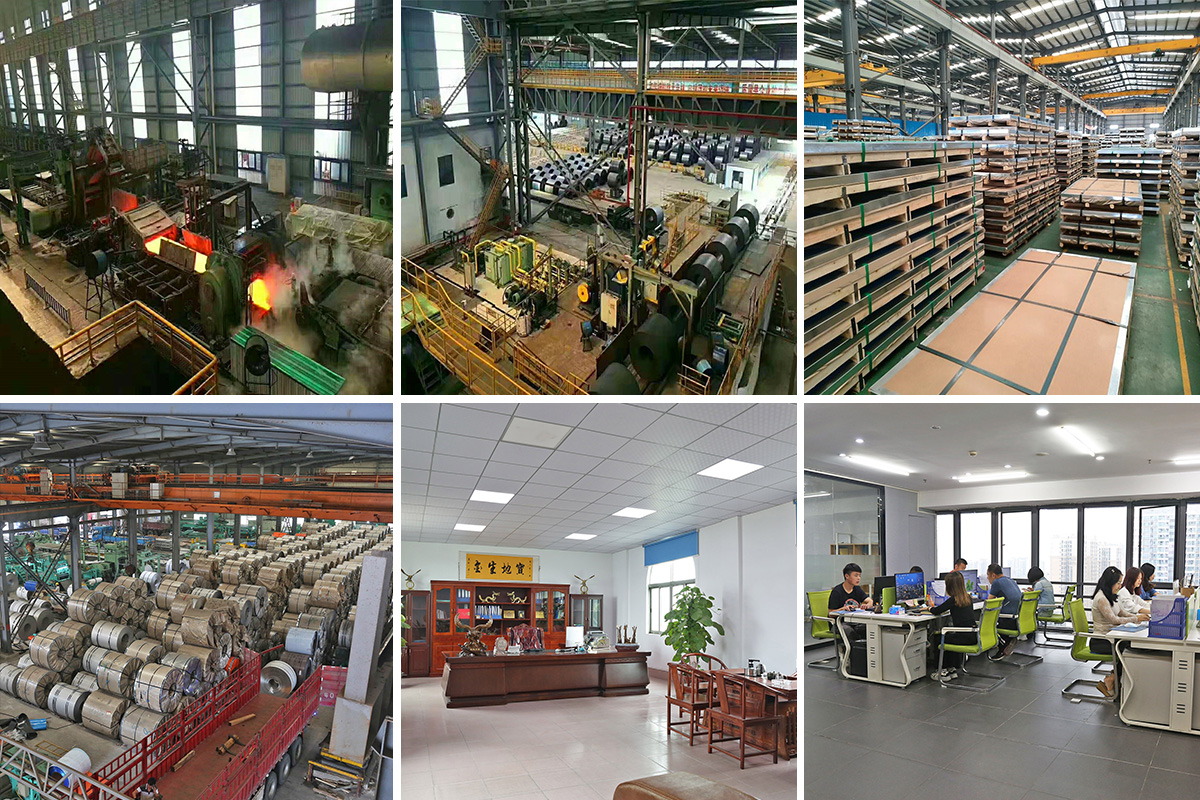ASTM 316 STAINLESS STEEL STRIP SUPPLIER | PUXIN METAL
Thickness: 0.1MM-3.0MM| Availability: | |
|---|---|
| Quantity: | |








PRODUCT DESCRIPTION
ASTM 316 STAINLESS STEEL STRIPS| PUXIN METAL
Thickness : 0.1MM~3.0MM
Width : 10MM~1250MM
Shape : Strip
Technique: Hot Rolled/Cold Rolled
Type : Austenitic stainless steel
Surface Treatment : BA、2B、NO.1、2D、NO.4、HL、8K
MOQ : 5 TON
Samples : Support
Stock: 10,000+ tons
Payment terms: L/C T/T (30%DEPOSIT)
Capacity:Monthly shipment volume reaches 4000+ tons
Processing Service:Bending, Welding, Decoiling, Punching, Cutting.
USE:Automobile, aviation, aerospace hardware tools, chemical industry.
316 stainless steel strip is a stainless steel material with excellent corrosion resistance, excellent strength and good processing performance, which is widely used in many industries. Its main features make it have important application value in the fields of chemical industry, food processing, medical equipment, marine engineering, architectural decoration, automobile and transportation. 316 stainless steel strip is often used to manufacture chemical containers, ships, oil and gas platforms, medical equipment and architectural decoration parts. With its high temperature resistance and corrosion resistance, it performs well in harsh environments. The wide applicability and excellent performance of this material make it an ideal choice for many industries.
Element | Composition (%) |
Carbon (C) | 0.08% |
Silicon (Si) | 1.00 |
Manganese (Mn) | 2.00 |
Chromium(Cr) | 0.030 |
Nickel(Ni) | 10.00~14.00 |
Sulfur(S) | 0.030 |
Phosphorus(P) | 0.035 |
molybdenum(Mo) | 2.00~3.00 |
| Yield Strength (N/mm²) | ≥205 |
| Tensile Strength (MPa) | ≥520 |
| Elongation (%) | ≥40 |
| Hardness (HB) | ≤187 |
| Hardness (HRB) | ≤90 |
| Hardness (HV) | ≤200 |
| Density (g·cm⁻³) | 7.93 |
| Specific Heat (c at 20°C) (J·g⁻¹·°C⁻¹) | 0.502 |
| Thermal Conductivity (λ) (W·m⁻¹·°C⁻¹) | 20°C: 12.1, 100°C: 16.3, 500°C: 21.4 |
| Linear Expansion Coefficient (α) (10⁻⁶·°C⁻¹) | 20–100°C: 16.0, 20–200°C: 16.8, 20–300°C: 17.5, 20–400°C: 18.1 |
| Electrical Resistivity (Ω·mm²·m⁻¹) | 0.74 |
| Melting Point (°C) | 1398–1420 |
| Tensile Strength (σb) (MPa) | ≥520 |
| Yield Strength (σ0.2) (MPa) | ≥205 |
| Elongation (δ5) (%) | ≥40 |
| Reduction of Area (ψ) (%) | ≥60 |
| Hardness (HB) | ≤187 |
| Hardness (HRB) | ≤90 |
| Hardness (HV) | ≤200 |
PRODUCT SHOW

About US

APPLICATION
316 stainless steel strip has a wide range of applications in multiple industries. It is widely used in the chemical industry to manufacture chemical containers, pipelines, heat exchangers and other equipment. With its excellent acid and alkali resistance, it effectively prevents corrosive media from corroding the equipment, thereby ensuring the safety and stable operation of chemical production. Due to its excellent hygiene and corrosion resistance, 316 stainless steel strip also has important applications in the food processing industry, such as equipment such as agitators, conveyor belts and storage tanks, which can ensure cleanliness during food processing and avoid pollution.
In the field of medical equipment manufacturing, 316 stainless steel strip has become an ideal material for the production of key components such as surgical instruments and implants due to its non-toxic and harmless characteristics. In marine engineering, 316 stainless steel strip is widely used in structural parts and piping systems of ships and offshore platforms due to its excellent seawater corrosion resistance, and can remain stable and reliable in harsh offshore environments.
In addition, 316 stainless steel strip is also widely used in the building decoration industry, especially in industrial or marine atmospheric environments with severe corrosiveness. With its excellent corrosion resistance and beautiful surface treatment, it has become an ideal choice for building components such as curtain walls, side walls, and roofs.
The two most commonly used types of stainless steel are 304 and 316 (or the corresponding German/European standards 1.4308 and 1.4408). The main chemical difference between 316 and 304 is that 316 contains molybdenum (Mo), which gives it superior corrosion resistance in high-temperature environments. As a result, engineers typically choose 316 for components exposed to high heat. However, there are exceptions: 316 should never be used in concentrated sulfuric acid environments, even at high temperatures, as this can lead to serious problems.
For those familiar with mechanical engineering, you may recall the black solid lubricant—molybdenum disulfide (MoS2)—used to prevent thread seizing in high temperatures. This leads to two key conclusions: [1] Molybdenum is indeed heat-resistant, and [2] Molybdenum readily reacts with sulfur ions to form sulfides. Therefore, no stainless steel is impervious to corrosion. Ultimately, stainless steel is a form of steel with many impurities (though these impurities are more corrosion-resistant than steel itself), meaning it can still react with other substances.
